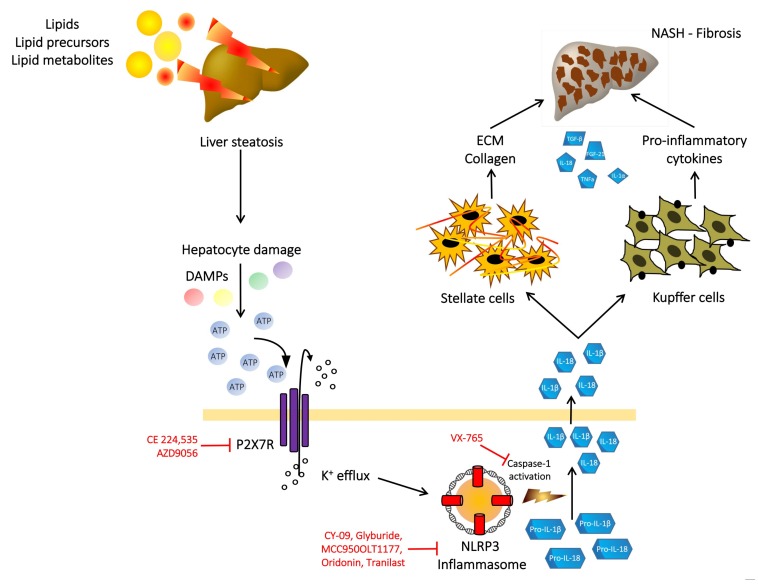Figure 1.
Schematic illustration of the P2X7 receptor/NLRP3 inflammasome axis involvement in non-alcoholic fatty liver disease (NAFLD) pathogenesis and evolution to non-alcoholic steatohepatitis (NASH) and liver fibrosis. Upon exposure to an injury (for example due to lipid accumulation), damaged or dead hepatocytes release molecules (such as adenosine tri-phosphate - ATP) acting as danger-associated molecular patterns (DAMPs) on the P2X7R receptor which activation determines the assembly and activation of the NLRP3 inflammasome and the following cascade leading to caspase-1 activation, pro-IL 1β and pro-IL 18 cleavage and mature IL-1β and Il-18 release. These inflammatory cytokines modulate the activity of the stellate and Kupffer cells, further amplifying the inflammatory process, determining NASH and liver fibrosis due to extracellular matrix and collagen deposition. In red are reported the possible therapeutical targets to inhibit the inflammatory response due to P2X7 receptor/NLRP3 inflammasome axis activation.

